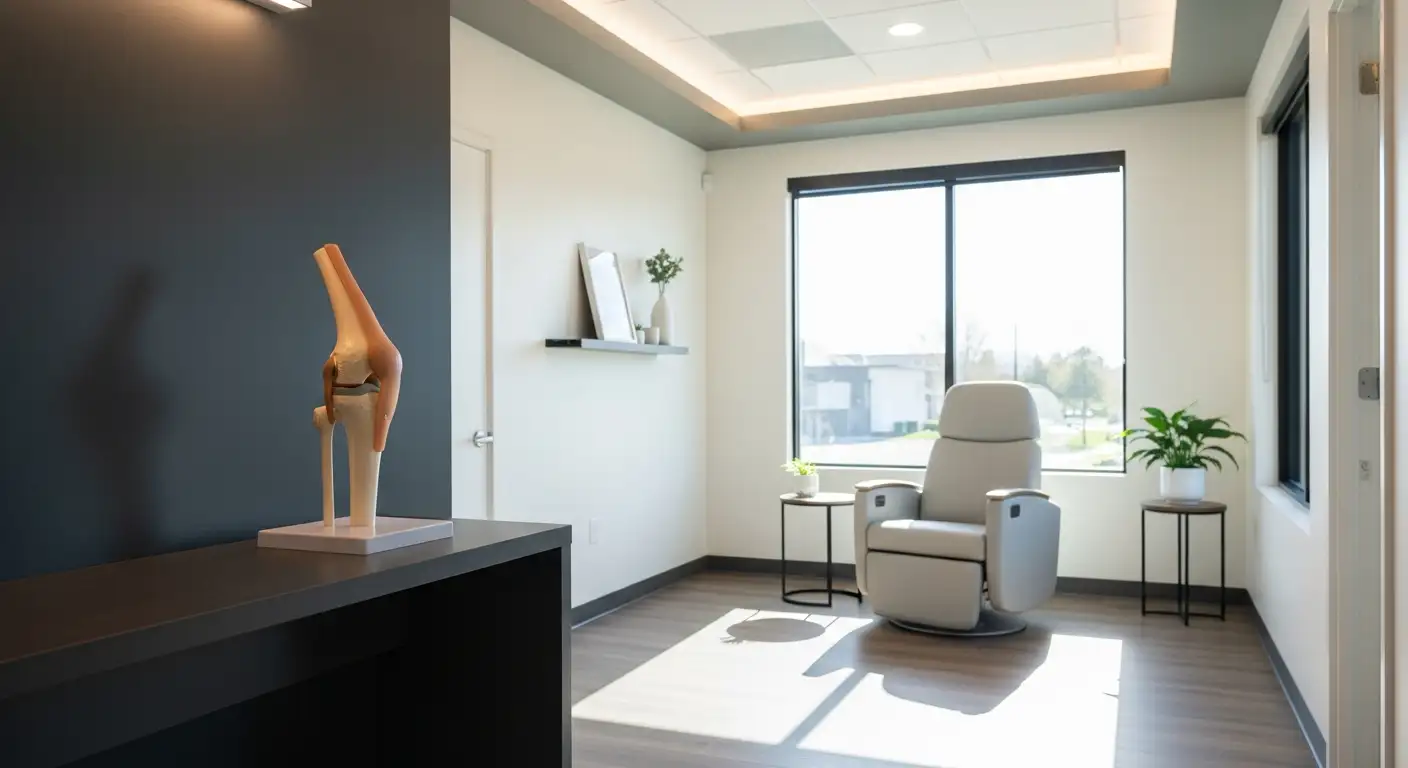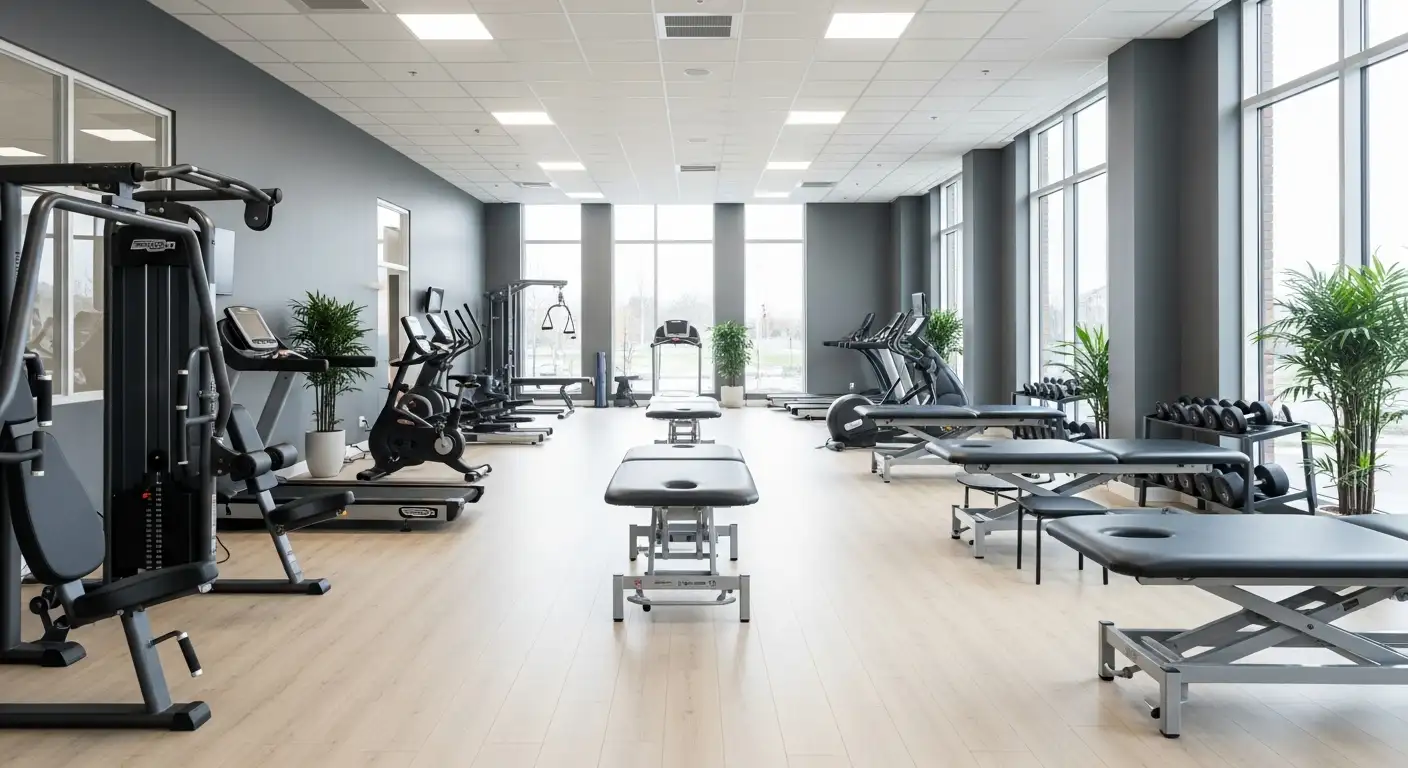Understanding Knee Pain
The knee is one of the most complex joints in the body, and it plays a critical role in movements such as walking, running, jumping, and bending. Pain when fully bending the knee, however, can be a common complaint among individuals of all ages. It's important to understand the potential causes and types of knee pain to effectively manage and treat this condition.
Causes of Knee Pain
Pain in the knee when bending can be attributed to an array of conditions and factors. According to Guthrie, these can include osteoarthritis, meniscus tears, bursitis, ligament strain, tendonitis, bone fractures, infections, overuse, unexpected increase in physical activity, obesity, or misalignment of the hips.

One or more small fluid-filled sacs near the knee joint, known as bursae, can become inflamed, leading to a condition known as knee bursitis. This inflammation can cause pain and limit movement, occurring over the kneecap or on the inner side of the knee below the joint [1]. Risk factors for developing knee bursitis include overuse, trauma, infection, or underlying medical conditions, and certain occupations or activities that involve prolonged kneeling on hard surfaces.
A previous acute knee injury can also increase the risk of new acute knee injuries, more so in male athletes than female athletes, according to a study cited on NCBI.
Types of Knee Pain
The type of knee pain can often help identify the underlying cause. For instance, arthritis often causes a dull ache or burning sensation, while an injury to the ligaments or tendons may result in a sharp and sudden pain. The location of the pain can also provide clues about the cause. As per Healthline, possible conditions causing knee pain when bending include:
- Pain behind the knee when bending
- Sharp pain in the knee when bending
- Pain above the kneecap when bending
- Pain in front of the kneecap when bending
Each of these conditions can be linked to different causes and may require different approaches for treatment. Understanding the types and causes of knee pain is the first step towards finding effective solutions and putting an end to discomfort during full bends.
Home Remedies for Knee Pain
Managing knee discomfort, especially the pain experienced when fully bending the knee, can often start at home. Several simple remedies can provide relief and help manage symptoms. These include the RICE method, heat therapy, and over-the-counter medication.
RICE Method
RICE stands for Rest, Ice, Compression, and Elevation. This method is a widely recommended first-line treatment for many types of injuries, including knee pain when bending.
- Rest: Reduce your activity level and avoid movements that cause or worsen the pain.
- Ice: Apply a cold pack on your knee for 15-20 minutes every two to three hours to reduce swelling and ease pain.
- Compression: Use a compression bandage to help support your knee and minimize swelling.
- Elevation: Elevate your knee above heart level when possible to help reduce swelling.
This method can help manage the symptoms and promote healing.
Heat Therapy
Heat therapy can help to relax and loosen tissues and to stimulate blood flow to the area. Some people find heat more comforting than ice, especially for chronic pain. You can use a heating pad or a warm towel. However, if the knee is swollen or if the injury is acute (less than 48 hours), ice is preferable.
Over-the-Counter Medication
Over-the-counter (OTC) medications can also provide relief from knee pain. Nonsteroidal anti-inflammatory drugs (NSAIDs), such as ibuprofen and naproxen, can help reduce inflammation and alleviate pain. Always use these medications as directed by the manufacturer or your healthcare provider.
It's important to remember that these remedies provide temporary relief for minor knee pain. If your knee pain is severe, persists despite self-care measures, or is caused by a more serious injury, it's crucial to seek medical attention. Your doctor can provide a proper diagnosis and recommend appropriate treatment options.
Medical Treatments for Knee Pain
When home remedies are not enough to alleviate the pain when fully bending knee, medical treatments may be necessary. These treatments range from non-invasive methods like physical therapy and orthotics to surgical procedures for more severe cases.
Physical Therapy
Physical therapy is a common medical treatment for knee pain. It focuses on restoring strength, flexibility, and function in the knee during the recovery process. This treatment helps to improve strength, flexibility, and range of motion in the knee joint, and can also address any underlying muscle imbalances or weaknesses that may contribute to knee pain. Physical therapy can help reduce pain and improve overall knee function, making it a valuable tool in the treatment of knee pain.
Orthotics and Braces
Orthotics and braces are used as medical treatments for knee pain. They provide support and stability to the knee joint, helping to alleviate pain and improve function. Orthotics are often custom-made inserts for shoes, while braces are external devices that can be worn around the knee. Both orthotics and braces reduce stress and pressure on the affected area, providing relief from knee pain.
Surgical Options
For severe cases of knee pain that do not respond to conservative treatments, surgical options are available. Procedures such as arthroscopy, partial knee replacement, or total knee replacement may be recommended depending on the severity and underlying cause of the knee pain. These procedures can help repair damaged structures in the knee and provide long-term pain relief [3].
It is important to consult with a healthcare professional to determine the best treatment option for individual cases of knee pain. While these medical treatments can provide relief, it is also essential to continue with home remedies such as rest, ice, compression, and elevation to aid the recovery process.
Recovery from Knee Injuries
Recovering from knee injuries, especially if it involves pain when fully bending the knee, is a process that requires patience, care, and adherence to prescribed treatments.
Expected Recovery Time
The time it takes to recover from a knee injury varies depending on the severity of the injury and the treatment method employed. Generally, recovery from a knee injury takes about 6 weeks. However, if surgery is required, the recovery time can range between 8 weeks to 12 months, according to Healthline.
Importance of Physical Therapy
Physical therapy plays a crucial role in restoring strength and function in the knee during the recovery process. It's especially vital for those experiencing pain when fully bending the knee. Therapeutic exercises help to improve flexibility, increase range of motion, and strengthen the muscles that support the knee.
Post-Surgery Rehabilitation
In cases where surgery was necessary to treat the knee injury, post-surgery rehabilitation becomes a key aspect of the recovery process. Surgical procedures for knee injuries can range from arthroscopy, partial knee replacement, or total knee replacement, depending on the severity and nature of the injury.
Post-surgery rehabilitation typically involves a combination of physical therapy exercises and medications to manage pain and inflammation, and promote healing. It's important to follow the prescribed rehabilitation program closely to ensure a successful recovery and prevent future knee problems.
As always, any severe or persistent knee pain should be evaluated by a healthcare professional. Timely diagnosis and treatment are crucial for effectively managing knee pain and preventing further complications.
Preventing Knee Pain
Prevention is always the best approach when it comes to health and wellness. This is especially true for knee pain, which can be debilitating and significantly hinder daily activities. Here are some strategies to help prevent discomfort when fully bending the knee.
Exercise and Weight Management
Regular physical activity is crucial for maintaining overall health and preventing knee pain. Exercise can improve cardiovascular health, increase blood flow, and reduce inflammation, contributing to an individual's pain tolerance. According to Medical News Today, individuals who are more physically active tend to have better blood flow, lower inflammation, and better heart health. This results in an increased ability to endure pain.
Moreover, NCBI states that exercise may have specific benefits in reducing the severity of chronic pain, as well as more general benefits associated with improved overall physical and mental health. As a result, physical activity and exercise programs are increasingly being promoted and offered in various healthcare systems for chronic pain conditions.
Weight management is another crucial aspect of preventing knee pain. Excessive weight can put added pressure on the knees, leading to pain and discomfort. Maintaining a healthy weight can alleviate this pressure, improving knee health and reducing pain.
Proper Technique and Footwear
The way you move and the shoes you wear can also have a significant impact on knee health. Incorrect bending or lifting techniques can strain the knees, leading to pain. It's important to learn proper techniques for these activities, particularly for those who engage in heavy lifting or high-impact sports.
Footwear also plays a key role in knee health. Shoes that provide adequate support can help maintain proper alignment of the knees, reducing the risk of pain. It's recommended to choose shoes that are comfortable, provide good support, and are appropriate for your specific activities.
Muscle Strengthening Exercises
Strengthening the muscles that support the knees can enhance stability, provide cushioning for the joint, and reduce pressure on the knees when bending. According to Guthrie, exercises like squats and lunges can be particularly beneficial for strengthening these muscles.
In addition to these, other exercises such as stretching, hip extensions, knee circles, side leg lifts, strength training exercises, and ankle rotations can improve knee flexibility, range of motion, muscle control, and joint stability over time. These exercises can help prevent knee pain and improve overall knee health.
Remember, it's always best to start slow and gradually increase the intensity of your exercises to prevent injury. If you're new to exercise or have pre-existing health conditions, it's advisable to consult with a healthcare professional before starting a new exercise regimen.
Seeking Medical Attention
While some knee pain might be manageable with home remedies, there are instances where medical attention is necessary. Understanding the signs to watch for, the importance of timely diagnosis, and the available treatment options can help in effectively managing and treating knee pain.
Signs to Watch For
Experiencing pain when fully bending the knee could be a sign of a more serious condition. Certain injuries, such as an ACL injury or a torn meniscus, can cause fluid buildup in and around the knee joint, resulting in pain and discomfort when fully bending the knee [3].
It is crucial to seek medical attention if the pain is severe or persistent, or if there was a recent knee injury accompanied by a popping noise, swelling, or difficulty bearing weight on the leg [2].
In some cases, knee bursitis can lead to an infected bursa over the kneecap, requiring medical attention. If there are signs of infected bursitis, medical intervention should be sought immediately [1].
Importance of Timely Diagnosis
Timely diagnosis is critical when dealing with knee pain. Ignoring the pain or delaying treatment can lead to further complications and might cause permanent damage to the knee joint.
A doctor can provide a comprehensive examination, determining the underlying cause of the pain. Further tests, such as X-rays or MRIs, may be necessary for a proper diagnosis and to create an effective treatment plan.
Treatment Options
Treatment options for knee pain can range from self-care techniques to medical treatments. In the case of knee bursitis, treatment often involves a combination of self-care techniques and medical treatments to alleviate pain and inflammation.
Medical treatments can include physical therapy, massage, and acupuncture. Over-the-counter pain relievers, muscle relaxers, and antidepressants might also be prescribed to manage pain and discomfort.
Remember, it is essential to seek medical attention if knee pain persists for more than a couple of days or if there is redness or swelling around the knee. Early diagnosis and treatment can significantly improve the chances of a full recovery and prevent further complications.
References
[1]: https://www.mayoclinic.org/diseases-conditions/knee-bursitis/symptoms-causes/syc-20355501
[2]: https://www.healthline.com/health/knee-pain-when-bending
[3]: https://www.mayoclinic.org/diseases-conditions/swollen-knee/symptoms-causes/syc-20378129
[4]: https://www.guthrie.org/blog/knee-pain-when-bending-heres-what-you-can-do-about-it





